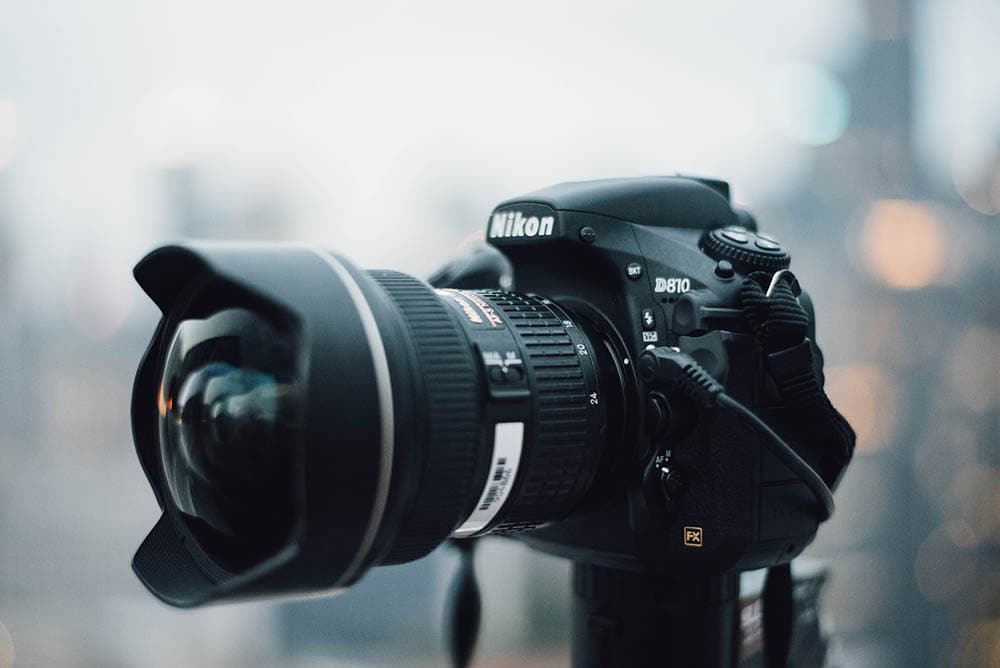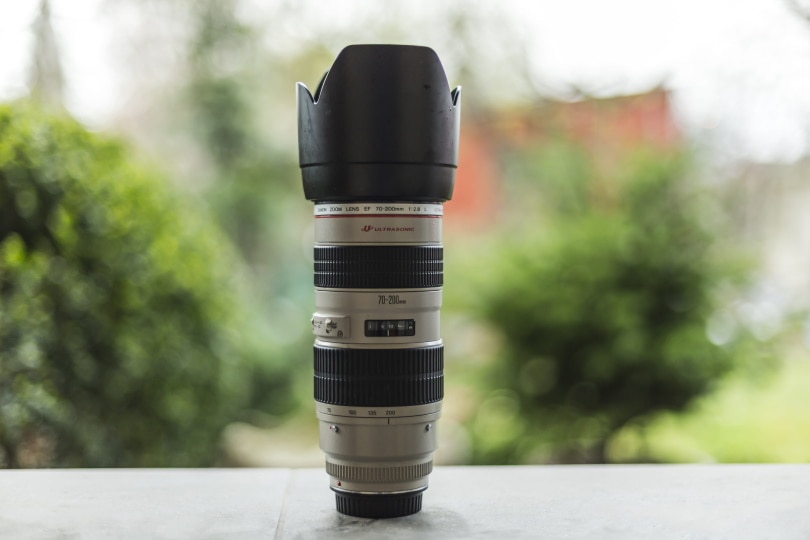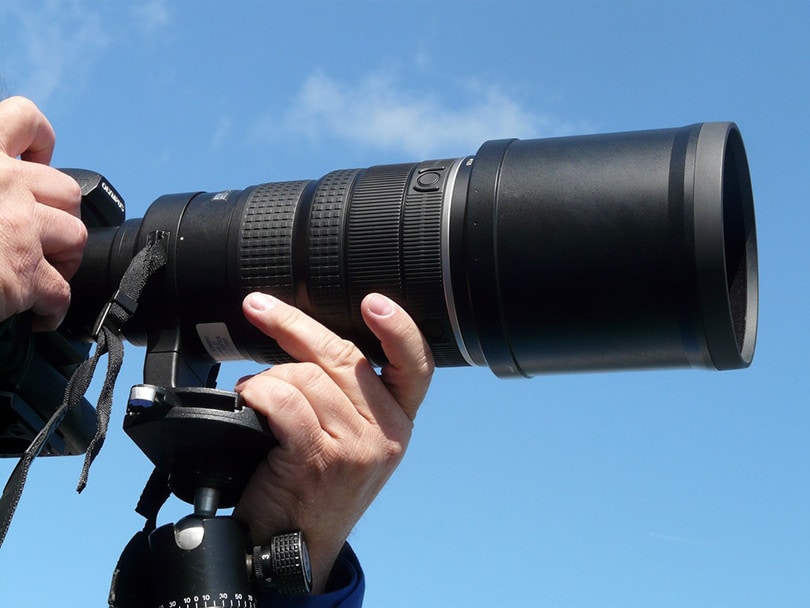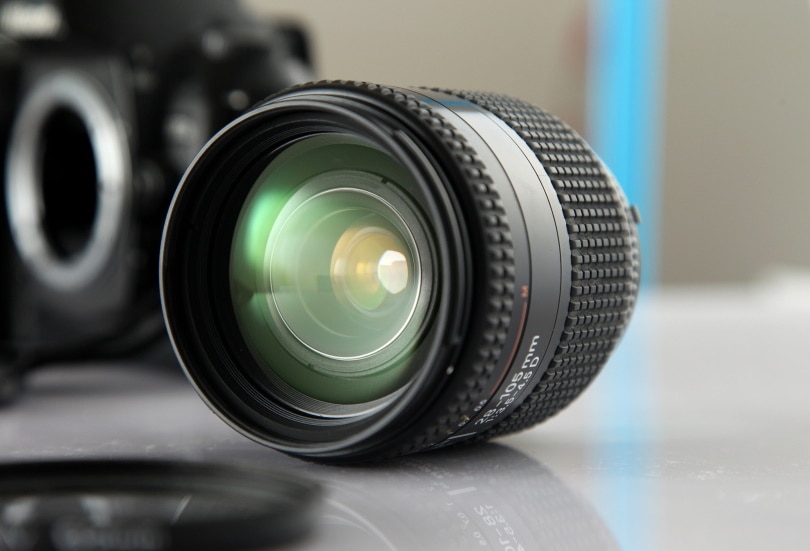12 Types of SLR Lenses Explained (With Pictures)
Last Updated on

Knowing which lenses to buy for your photography kit can sometimes be challenging, and it’s best to learn about each lens type. There are countless lenses available, but for SLR cameras, you may have more problems than finding lenses for modern digital bodies. Below we’ll cover 12 types of SLR lenses and everything you need to know about them!

The 12 Types of SLR Lenses Are:
1. Standard Prime Lens

| Focal range: | 24–135 mm |
Prime lenses are an essential tool in every photographer or filmmaker’s bag, and they are generally one of the first lenses you might buy when you begin your journey. This is because primes are easily available and create an attractive shallow depth-of-field (DOF) look. Their greatest feature is that they almost always have a very wide aperture—think f2.8 or f1.8. For subject and background separation, it’s the most effective option out there. However, this lens can be restrictive because you only have one focal length. Some popular focal lengths are; 24 mm, 35 mm, 50 mm, 85 mm, and 135 mm.
- Lightweight and portable
- Good for low-light environments
- Produces plenty of bokeh
- Singular focal length
- There isn’t a prime lens for every focal length
- Sometimes they are expensive
2. Standard Zoom Lens

| Focal range: | 24–105 mm |
Compared to the prime lens, a standard zoom is more capable in various conditions due to its flexible focal range and relatively fast aperture. It might not be as extreme as a prime, but the constant aperture f4 and f2.8 options will still produce great bokeh. A standard zoom might be a 24-70 mm, or even a 24-105 mm lens, which gives you both wide-angle and telephoto capabilities. Sometimes, the standard zoom lens may be included as a “kit lens” in your camera body purchase.
- Useful focal range
- Affordable
- Easy to learn
- Aperture limitations
- Can be expensive
3. Wide-Angle Lens

| Focal range: | 24–35 mm |
If you want to get as much of your surroundings as possible in a photo, a wide-angle lens will be your best friend. As they can be either prime lenses or zoom lenses, they are ideal when you need a wide field of view but don’t want to compromise with aperture. The most common focal lengths for wide-angle lenses are 24 mm, 28 mm, and 35 mm. Prime lenses in this category may also be referred to as “pancake lenses” because they’re unobtrusive.
- Good for landscapes and outdoor use
- Extremely versatile
- Limited focal range
4. Ultrawide-Angle Zoom Lens

| Focal range: | 12–24 mm |
Ultrawide-angle lenses provide the maximum field of view for your scene. It might seem like 12 mm isn’t much to play with, but small adjustments make a huge difference when it comes to wide focal lengths. For example, a 1 mm change from 15 mm to 14 mm is much more apparent than 100 mm to 101 mm. When it comes to their zoom ranges, they can be either 12–24 mm, 14–24 mm, or other variants. With an ultrawide, you still get the benefits of a wide-angle lens!
- Great for both landscapes and real estate
- You don’t need to take a step back for most shots
- Can be heavy and bulky
- Distortions are inevitable
5. Ultrawide-Angle Prime Lens

| Focal range: | 12–20 mm |
A prime variant of the ultrawide lens is more practical for astrophotography. With its fast aperture, an ultrawide prime will take in tons of light from the night sky with minimal star trailing. It can also be used for still life, indoor shots, and landscapes. However, primes can be difficult to master since you are limited to just one focal length, and they can be a challenge when composing shots.
- The best option for astrophotography
- Great for landscapes with interesting foregrounds and backgrounds
- Lightweight and compact
- Difficult to master
6. Telephoto Zoom Lens

| Focal range: | 70-200 mm |
Another vital piece of gear in many photographers’ camera bags is the telephoto zoom lens, which has a vast focal range. Most telephotos will come in a constant f2.8 or f4 package, with other styles covering variable apertures (such as f2.8-f4). On the wider end, you’ll be able to get portrait shots and everyday scenes. On the telephoto end, you can shoot compressed images and try wildlife photography while you’re at it. Just be careful when using longer focal lengths since pin-cushion distortion is more prevalent.
- Useful zoom range
- Versatile for portraits, wildlife, and landscapes
- 8 variants are quite heavy
- Can be bulky and awkward on a tripod (a tripod collar is recommended)
7. Super-Telephoto Zoom Lens

| Focal range: | 300+ mm |
Every dedicated wildlife and moon photographer has probably owned and employed a super-telephoto. These are the extending lenses you see people using when there is a moose crossing the road or when the sun is setting behind distant mountaintops. Most super-telephoto lenses are pretty hefty and come with a tripod collar to balance the weight. The typical super-telephoto lens ranges are 100–400 mm, 150–600 mm, and 200–600 mm. The range can vary depending on your mount, but many companies offer teleconverters to increase reach.
- Great for fast-action at a distance (depends on its autofocus)
- Very fun to use and get creative shots
- Usually, they can fit right in your pack
- Heavy and not the greatest for long hikes
- A bit of distortion on the long end
8. Super-Telephoto Prime Lens

| Focal range: | 300+ mm |
Similar to the super-tele zoom lens, the prime style has higher focal ranges. 300 mm, 500 mm, 600 mm, and even 1200 mm lenses are available, but the lenses are fairly unpopular for a few reasons. They’re massive, and you might not be able to put them in a bag. They also fetch a high price that far exceeds the average person’s budget. The good thing about them is that they do not compromise with aperture. A 300 mm prime might be at a constant f4, which is ideal for low-light shots with a long lens. Don’t be discouraged if you see a 600 mm f11 lens either, since an aperture at such a long focal length will still have a lot of DOF for wildlife.
- Great for shooting the moon, birds, and distant objects
- Includes a tripod collar (most of the time)
- Hefty and difficult to store
- Expensive
9. Fisheye Lens

| Focal range: | 14 mm and under |
Fisheye lenses are a unique type of SLR lens but are not used as often as an ultrawide lens. This is because fisheye lenses have significant distortion effects. On the outside of the glass, the lens element is convex and protrudes like a sphere, unlike common lenses with flat glass surfaces. Fisheyes can reach extremely wide focal lengths, such as 10 mm, or even 7 mm. The pictures or videos you take might look spherical since they don’t always fit on a square screen or film.
- Extreme wide-angle focal lengths
- Cheap
- Lightweight
- Filters are difficult to deploy
- Lots of distortion
- Excessive vignetting
10. Wide-Angle Macro Lens

| Focal range: | 12-24 mm |
Although we’ve covered wide-angle prime and zoom lenses, wide-angle macro lenses are also a part of the family, but with a special twist. The close-focusing distance of macro lenses can be just inches away, enabling photographers to capture miniature subjects up close and personal. With a bit of creativity, you can achieve fantastic shots of plants, insects, fungi, and an entire world of aquatic life—all while getting the surrounding area in your images. They are also popular for food photography and product shoots . Wide-angle macro lenses can also come in the form of a probe lens, which has a long, tubular design.
- Exceptional close-focusing distance
- Opens up creative opportunities
- Limited uses
- Difficult to use underwater
11. Standard Macro Lens

| Focal range: | 35-105 mm |
If you skimmed over number 10, the same rules mostly apply to a standard macro lens. The difference is that you can get even more intimate due to the longer focal length. In this case, many macro lenses are prime lenses at focal lengths such as 50mm, 90 mm, and 105 mm. They are often used to capture small subjects like flowers and even food items that would otherwise be difficult to get with a normal lens. Standard macros can focus quite closely and have a typical ratio of 1:1, but it can be greater.
- Good for vegetation, miniatures, and aquatic life
- Exceptional close-focusing distance
- Manual focusing
12. Tilt-Shift Lens

| Focal range: | Usually, they are under 100 mm |
One of the lesser-known lens types is the tilt-shift, which functions as a way to compensate for distortions caused by wide-angle lenses. Tilt shifts are beneficial for street photography since you don’t have to worry about the lines being bent. They work by moving the actual orientation of the lens in a different direction. It might appear a bit odd, as the lens will look like it’s bending.
- Removes distortion
- Good for street photography
- Hard to find
- Expensive

Conclusion
All lenses, regardless of type, size, or price range, will have their strengths and weaknesses. It’s important to know your shooting style and what you need your equipment to handle in various conditions. We hope this list of SLR lenses provides insight into what to look for when buying or using one in the field!
Featured Image Credit: CHUTTERSNAP, Unsplash
Table of Contents
About the Author Robert Sparks
Robert’s obsession with all things optical started early in life, when his optician father would bring home prototypes for Robert to play with. Nowadays, Robert is dedicated to helping others find the right optics for their needs. His hobbies include astronomy, astrophysics, and model building. Originally from Newark, NJ, he resides in Santa Fe, New Mexico, where the nighttime skies are filled with glittering stars.
Related Articles:
Monocular vs Telescope: Differences Explained (With Pictures)
How to Clean a Refractor Telescope: Step-by-Step Guide
How to Clean a Telescope Eyepiece: Step-by-Step Guide
How to Clean a Rifle Scope: 8 Expert Tips
What Is a Monocular Used For? 8 Common Functions
How to Clean a Telescope Mirror: 8 Expert Tips
Brightfield vs Phase Contrast Microscopy: The Differences Explained
SkyCamHD Drone Review: Pros, Cons, FAQ, & Verdict
